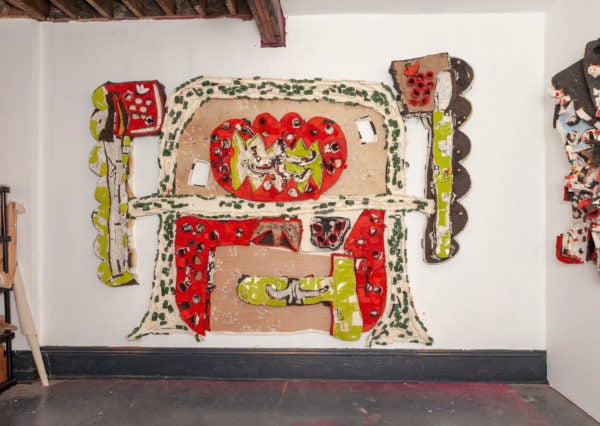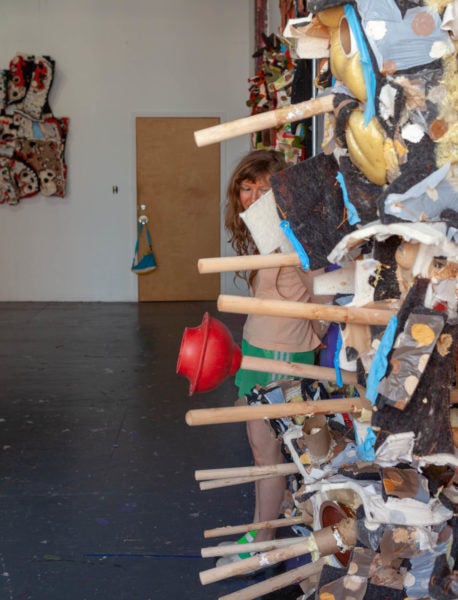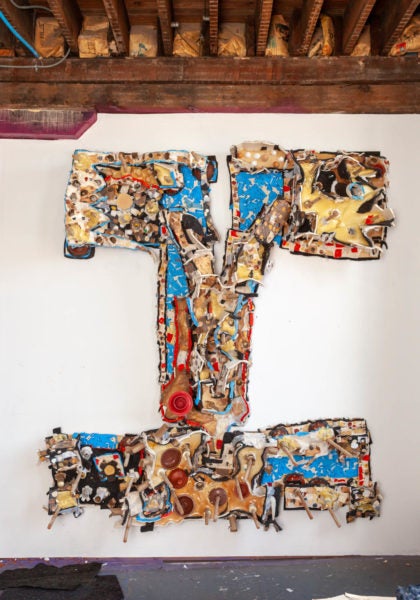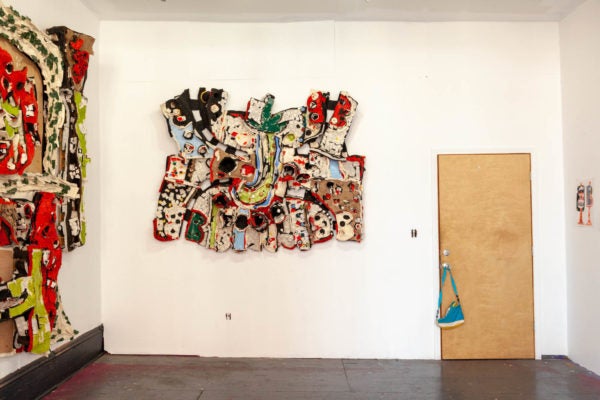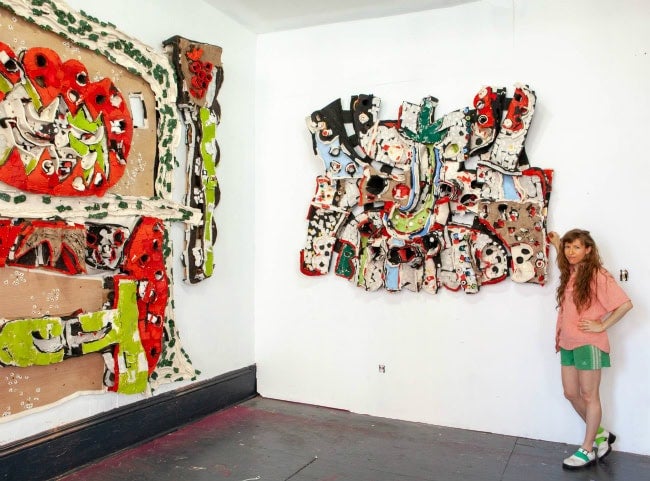
I met Katya over a decade ago when we were both students at Cooper Union in New York. In school, they were the gregarious class clown and cool kid, making irreverent, slapstick paintings and art-cum-standup comedy that charmed students and professors alike. Back then, their energy and work evoked the joie de vivre and sarcastic bite of being young, able-bodied, plopped into the epicenter of the art world. Shortly after I moved back home to Georgia in 2015, Katya wrote to me, explaining that they had ended up in Athens, Georgia, and were eager to reconnect. Their life circumstances and energy level, however, had changed dramatically since their undergraduate salad days.
Shortly after graduation, Katya faced the oppressive, debilitating effects of several autoimmune diseases they had been skillfully suppressing while at school. As they were forced to convalesce temporarily at their family’s home in Florida and ultimately settle in a quiet, small city with access to ample rest and healthcare, Katya’s bright prospect of forming a life as a well-connected emerging artist in New York came to an unexpected and harsh end. When people asked why they moved to Athens, Katya jokes that they wished they could say, “Because of my rash and my diarrhea.” Now, after calibrating themselves and accepting to the realities of living with an invisible but taxing bodily reality, Katya has developed a robust art practice that has been increasing in visibility and scale at an ambitious clip.
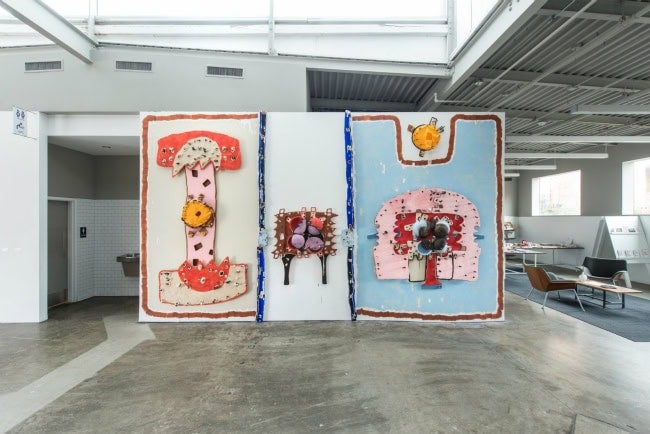
When we started hanging out two years ago, Katya was just beginning to establish themselves as an exhibiting artist, showing works in friends’ project spaces (including mine, Species). Since then, they have presented a large-scale installation at Atlanta Contemporary, received the Wynn Newhouse Award, and were selected as a McDowell Colony resident. Later this month, Katya will present their first solo show in New York, Hysteric Signs, at White Columns. After visiting their new studio on a recent Sunday afternoon, it was easy to understand why they have received acclaim both in and outside of the South. If their earlier installations and murals could be described as riffing on the cute and decorative, their most recent work has shed the domestic queasiness of feminized patterns and colors for a harsher and more confrontational visual language.
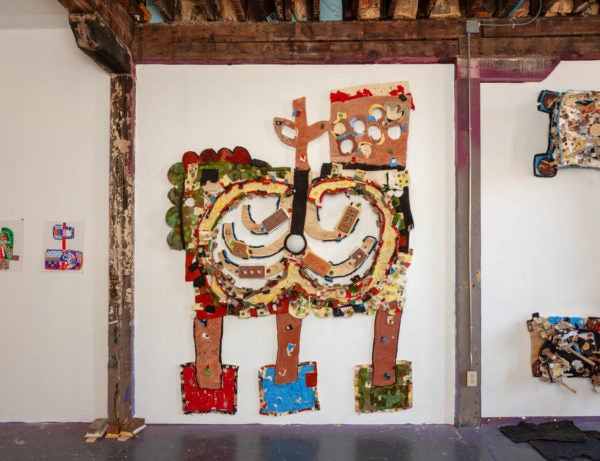
The new works are gargantuan—not only in scale (which is awe-inspiring coming from such a relatively small person), but also in complexity and energy. The wall-bound sculptures are, at the same time, corporeal and architectural, sloppy and expertly constructed. The mega forms read as glyphs, enlarged bisections of a body, or letters. In their past works, Katya painted murals to contextualize smaller clay and plaster components— ceramics that read here as nipples, turds, or tummies—as a means of inserting the body into the patterns and architecture of an interior space. Now, it’s as though the body horror suggested by those earlier works has instead become architectural in scale and construction.
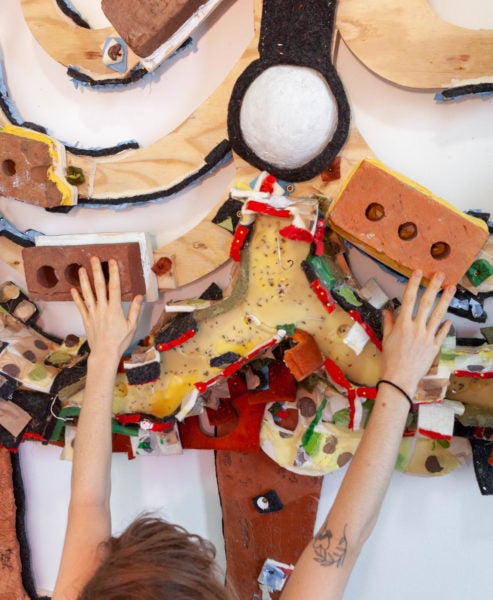
Each work is comprised of an elaborate array of materials including plaster, latex, used medicine, sewing pins and spools of thread. Channels formed within one work are filled with scented wax, transforming it into a giant candle. Each work appears to be the result of many months’ effort, all of them having been constructed by Katya, with help from friends from New York visiting Athens, or their partner, who was also our classmate. This work’s layered qualities and demonstration of painstaking, handcrafted labor evoke the obsessive energy of Southern self-taught artist environs like St. EOM’s Pasaquan or Howard Finster’s Paradise Garden. But instead of proselytizing fundamentalist Baptist messages, or creating a mother ship for futuristic benevolent aliens, Katya’s project is one of inward world-making.
Describing their illness, Katya says that “[autoimmune diseases] are the sickness of the body as a manifestation of the sickness of the world.” They firmly believe that the toxins, pollutants, fertilizers, and preservatives writ large in the American ecosystem are, if not a cause, then certainly an exacerbating influence on such diseases, which are often treated by medicines filled with their own menagerie of artificial chemical compounds. Their sculptures, in turn, manifest the horror of an ill body and an ill world as a microcosmic, frenetic nest of material mash up.
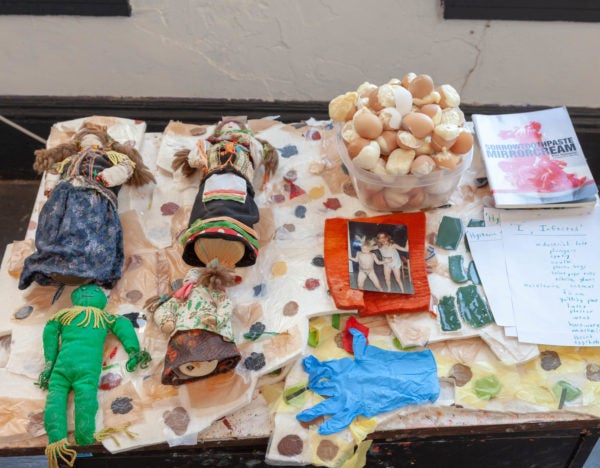
Katya’s references are laid out on a table for me and other visitors to their studio to explore: Eastern European folk dolls made by their grandmother, constructed around recycled Soviet-era bottles; a psychosexual family photo of them and their brother posing, creature-like, with plastic bags as bodysuits; books of poetry; and their backyard chickens’ eggs filled with insulating spray foam. This material collision between intimate, familial space and the alien, plastic garbage of the modern world displays the same tension between humans and toxins suggested by Katya’s works on the walls behind these references. Components of each work are wrapped, sewn, sprayed, stretched, and contorted to achieve overall construction as a distinct object.
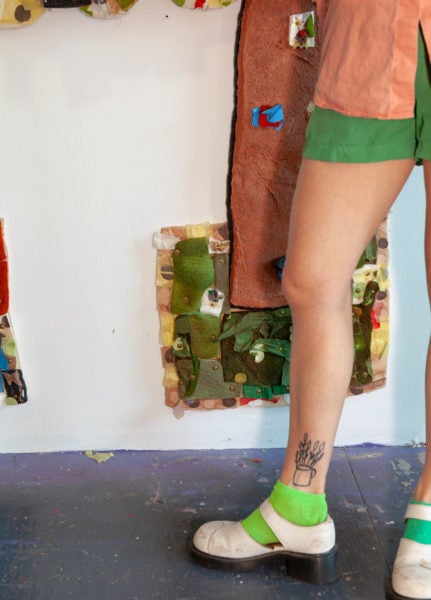
My favorite part of watching Katya’s practice grow and expand over the last several years has been the slack-jawed wonder I feel every time I see a new project. Each development in their work feels immense, exploratory, and dynamic. I know the physical difficulty of executing these works takes a toll on them, yet each project seems to demand more stamina, more space, different energy. After years of bodily restrictions requiring them to effectively table their art practice, Katya is regaining creative speed with the reckless abandon of a beautiful tornado. I’m waiting patiently to see the next mutations of their spectacular world and the ones that follow.
Katya Tepper’s solo exhibition Hysteric Signs opens on Thursday, September 27 at White Columns in New York. Their installation How Does the External Shape Shape the Internal Shape remains on view at Atlanta Contemporary through December 16. Watch Tepper speak about their work here.
